Denys Colomb de Daunant wrote and acted in Albert Lamorisse’s boy-meets-horse film, White Mane, in 1953. Lamorisse’s feature concerns the wild horses that roam the Camargue in France, and the same horses are the subject of Dream of the Wild Horses (1960), a kind of oneiric sequel to White Mane. There’s no narrative, only a succession of slow-motion shots of horses fighting, running, and—in a sequence you hope wasn’t set up for the cameras—stampeding through a wall of flames. Of note for me is the score by Jacques Lasry which is performed on the Cristal Baschet, a unique instrument of glass and metal developed by François and Bernard Baschet in the 1950s. (See this post.) Films such as this depend more than most on their musical accompaniment, and the eerie, rumbling timbres of Lasry’s music help sustain the dreamlike qualities of the piece.
Month: October 2015
Elaine Hanelock’s Hollywood stars
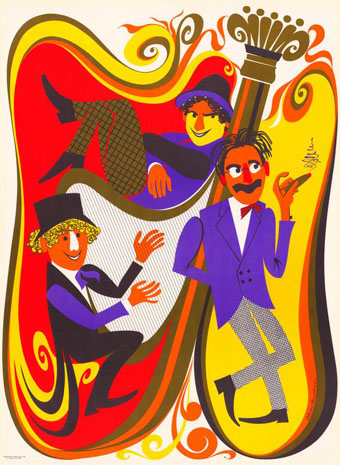
The essay I wrote about psychedelic art for Communication Arts earlier this year had a word limit so there was little mention of the way the psychedelic style was swiftly co-opted by advertising and commercial art as a means of reaching a youthful audience. This is a really a subject in itself, the way in which an aesthetic that was countercultural in 1965 was becoming mainstream by 1968, and was still rippling through the world of graphic design in the early 1970s.
Elaine Hanelock’s posters of Hollywood stars of the 1920s and 30s were published by Royal Screen Craft Inc, Los Angeles, in 1968, and combine two trends: psychedelic art and the nostalgia for old Hollywood that emerged in the mid-60s. There are ten posters in the set: The Marx Brothers, Clara Bow (the “It Girl”), Mae West & WC Fields, Laurel & Hardy, John Barrymore, Charlie Chaplin, Clark Gable, Jean Harlow, Will Rogers, and Wallace Beery & Marie Dressler. Nobody seems to know anything about Elaine Hanelock’s career elsewhere but her posters continue to find an audience among collectors.
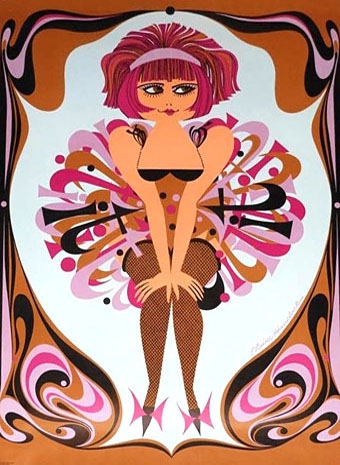
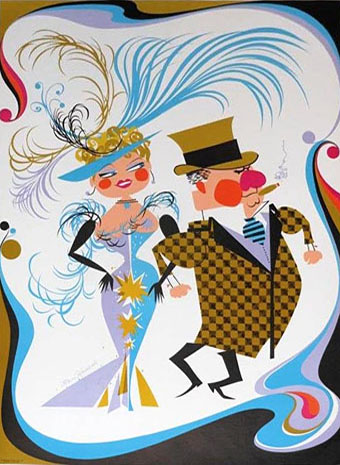
The nocturnes of William Degouve de Nuncques
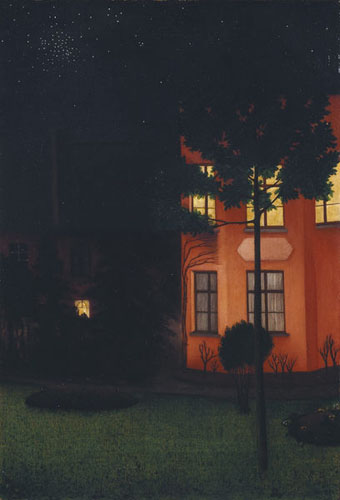
The Blind House (1892).
William Degouve de Nuncques (1867–1935) is one of the less well-known Belgian Symbolists but one with a place in art history for the picture above. The mysterious atmosphere of The Blind House (often labelled as The Shuttered House, The Pink House or even The House of Mysteries) was admired by René Magritte who inverted the apparent conjunction of night and day in his own Empire of Lights series. Degouve de Nuncques’ other pictures from this period possess a similar quality of nocturnal mystery, a predilection he shared with other Belgian artists such as Léon Spilliaert and Paul Delvaux. Many of these pictures are pastels, a popular medium among the Symbolists for its nebulous effects.
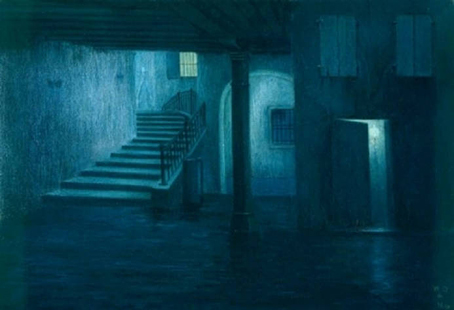
In Venice (1895).
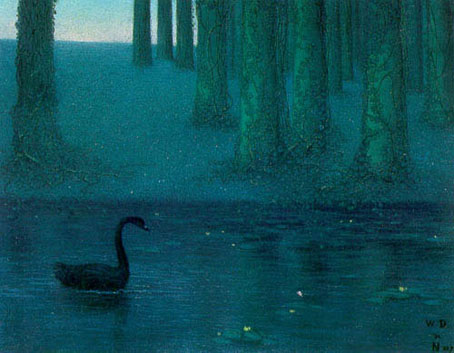
The Black Swan (1896).
Continue reading “The nocturnes of William Degouve de Nuncques”
Weekend links 280
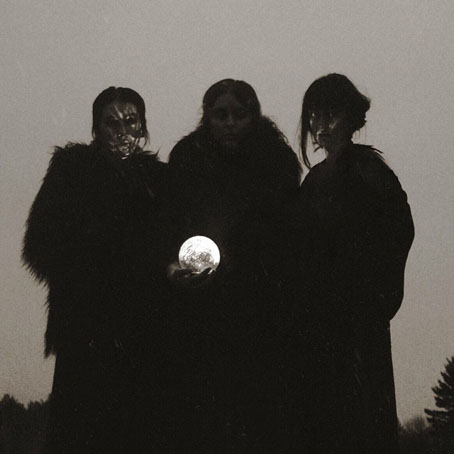
Keepers of the Moon by Bill Crisafi.
• More Thomas Ligotti for obvious reasons: Weird Fiction Review now has two Ligotti interviews, one from 2011, and a new one prompted by the Penguin edition of his stories. Also at Weird Fiction Review, two Ligotti narratives: The Night School, and The Red Tower. The latter demonstrates how weird fiction can dispense with character and story and still have a powerful effect.
• Related to the above: Terrors supernatural and psychological: Laird Barron on Ray Russell’s The Case Against Satan; Russell’s novel is also being reprinted by Penguin this month. And at Dangerous Minds: a collection of vintage dolls and ventriloquist dummies.
• “Time and again his books—even as they tell of remote planets and their inhabitants—foresee something perplexingly close to our present-day society, from visionary constructions to machines of destruction.” Strange Flowers on Paul Scheerbart.
• Coil’s out-of-print discography gets a career-spanning reissue through Threshold Archives. Related: Russell Cuzner interviews Thighpaulsandra.
• Mixes of the week: The Ivy-Strangled Path Vol. XI by David Colohan, and Sounds From Beyond (October 2015) by Glossop Record Club.
• Bill Crisafi: Artist, Dreamer, Feral Mystic. An interview with the artist by S. Elizabeth for Dirge magazine.
• Also being given the revenant treatment, out-of-print short stories by Aleister Crowley.
• Alex Mar on the powerful appeal of modern witchcraft—even for a skeptic.
• A Rest Before The Walk is a new album by Keith Seatman.
• The Wounded Kings set out their stall at Bandcamp.
• The Witch Queen Of New Orleans (1971) by Redbone | Witch (1977) by Goblin | Ditch Witch (2009) by Pink Mountain
MC Escher book covers
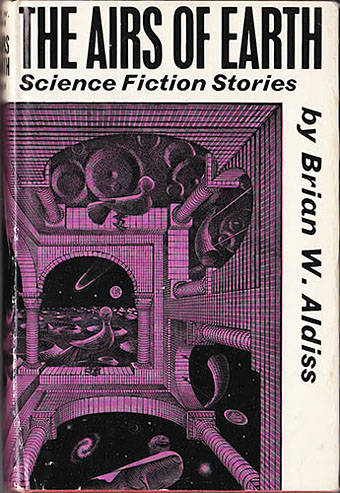
1963. Art: Other World (1947).
MC Escher’s prints have been touring the UK this year: a few months ago they were in Scotland, this month they can be seen at the Dulwich Picture Gallery in London. The renewed attention prompted the BBC to produce a documentary, The Art of the Impossible: MC Escher and Me, in collaboration with Professor Roger Penrose. One of the programme researchers saw my earlier post about the use of Escher’s work on album covers, and asked if I wanted to appear on camera talking about this, something I politely refused to do. I’m happy to hold forth from a keyboard, however, so here’s a post about some of the books that have used Esher’s work to decorate their covers. Most of these are fiction but there must be many more non-fiction titles—especially in the fields of science and mathematics—that borrow Escher’s prints.
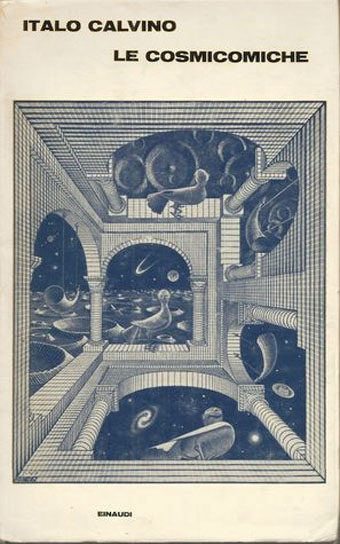
The first edition of Calvino’s comic stories from 1965.
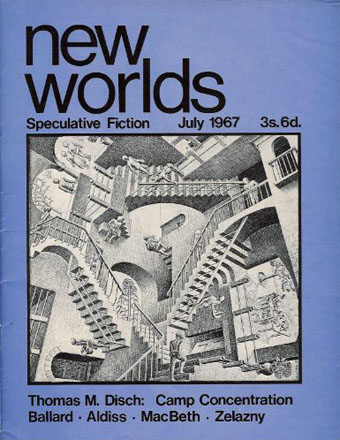
Art: Relativity (1953).
Not a book but editor Michael Moorcock has claimed that this was the first UK magazine to print any of Escher’s work.

